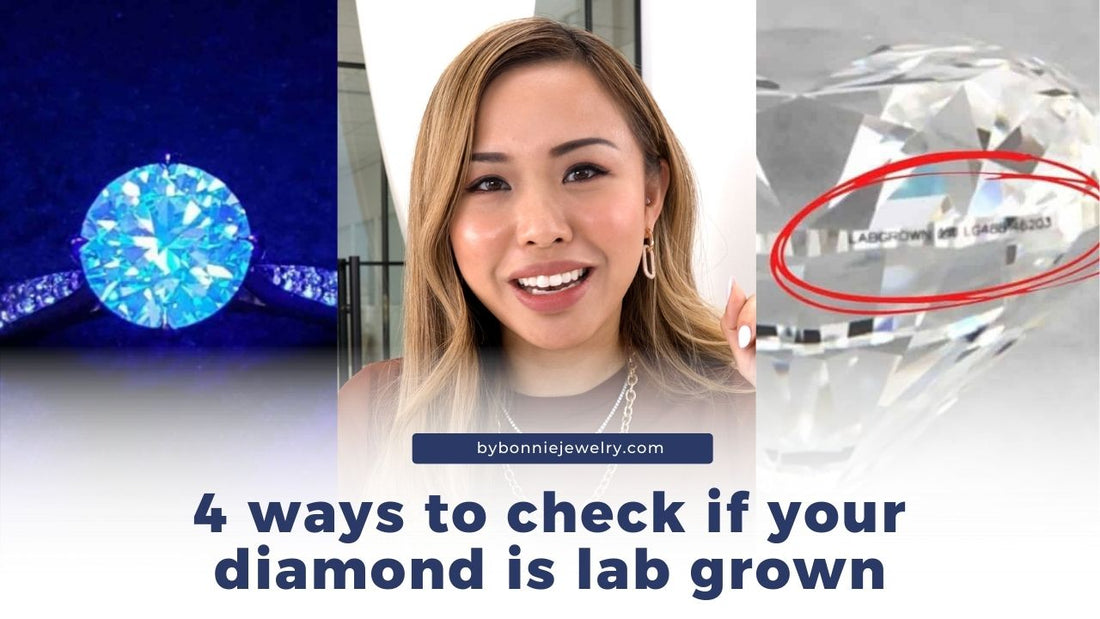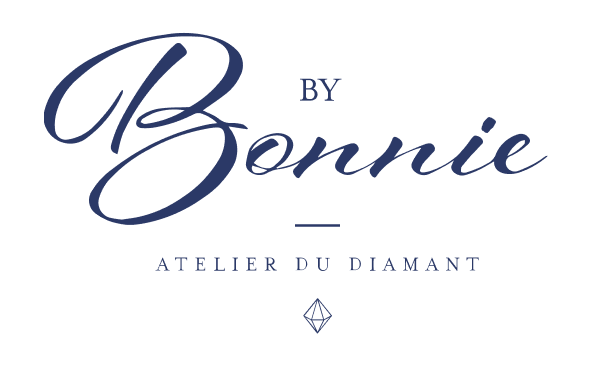
How to Identify a Natural Diamond in 3 Seconds!
Share
Got a diamond in your hands or shopping online? Wondering if it’s lab-grown? I got you! Here are four quick ways to check. Welcome back to the blog—it's Bonnie with By Bonnie Jewelry, where we talk about all things diamonds. Let’s get into it!
Fluorescence – The Quickest Tell!
Now, let’s talk about fluorescence. Yes, there will always be exceptions—one-off stones that don’t follow the rule—but in most cases, lab-grown diamonds don’t have fluorescence. That’s why, even as a gemologist, one of my fastest ways to tell if a diamond is natural or lab-grown is by checking for fluorescence.
Take a look here: I’ve got two diamonds. The top one is a 4-carat lab-grown diamond, and the bottom one is a 5-carat natural diamond. The lab diamond is a D color, and the natural one is a K color. I’m shining a fluorescent light over them in a darker setting, and boom—instant giveaway. The natural diamond glows with a strong blue fluorescence, while the lab-grown one stays neutral.
Now, keep in mind, there are rare cases where a lab-grown diamond might show fluorescence too. But if you see that blue glow? It’s a strong sign that the diamond is natural. For full confirmation, though, the next step is sending it to a gem lab.
If the Price Is Too Good To Be True … It Probably Is!
Let’s talk about pricing, because this one gets people all the time.
So recently, a friend of mine said, “Bonnie, I want to get my girlfriend a promise ring. My budget is $100 to $150. Can you help?” And I thought, why not? So I did a quick online search for a promise ring, and guess what popped up? A listing for a diamond ring.
Now, here’s where my jeweler instincts kicked in. The price? $250 for a full gold ring with multiple diamonds. And I was like… wait a minute. That price doesn’t make sense. So I scrolled down to check the description—nowhere did it say “natural diamond.” Nowhere did it say “lab-grown” either. I even went deep into the FAQ section (because I know where to look for these things), and still, nothing.
At this point, I had to hop on live chat with customer support just to get an answer. And you know what? Turns out, it was a diamond simulant! Meaning, it’s not a real diamond—it’s something like cubic zirconia or moissanite.
Listen, if that’s what you’re looking for, that’s totally fine! But the problem? The listing wasn’t clear. Transparency is everything when it comes to jewelry, and people deserve to know exactly what they’re paying for. So if you see a deal that seems too good to be true? Read the fine print—or better yet, ask an expert.
Check the Diamond’s Certificate —Yes, It’s That Simple!
Okay, I know this one sounds obvious, but you’d be surprised how many people overlook it!
If you’ve been given a diamond ring—or maybe you inherited one—you might not have thought to check the paperwork. But trust me, grab that certificate! If it says “laboratory grown”, well, there’s your answer. You have a lab-grown diamond! Simple, easy, no guesswork.
And if you don’t have a certificate? That’s when you bring it to a trusted jeweler (hi, hello, I can help!) or send it to a gem lab for verification. Always check—because knowing exactly what you have is everything in diamonds.
The Secret’s in the Inscription—Check the Girdle!
Last but definitely not least—take a close look at the diamond’s girdle. Yes, the girdle!
Now, this one can be a little tricky. Most jewelers (like yours truly!) use 10x or 20x magnification to read inscriptions. If you’re not used to working with diamonds, it might be a little tough to spot.
But don’t worry! You can grab a jeweler’s loupe online (Amazon has tons), and with a little patience, you’ll find it. If your diamond is lab-grown, it will have a tiny inscription on the girdle that says “laboratory grown”—proof right there!
I hope this was helpful! Got more diamond questions? Drop them in the comments! And don’t forget to follow me on Instagram @ByBonnieJewelry for all things diamonds. See you in the next blog—bye!

